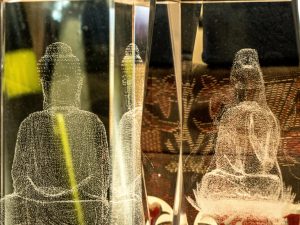
Welcome to the human condition. Here’s how we got here, & how Gotama frames the tasks1 for escaping it.
We are beings who know about death
Patterns that repeat mean survival; we humans are the most complex such pattern, so far as we know. Survival happens through constant dissatisfaction with what comes up in the flow of our experience. Crucially, our cognitive abilities provide superior survival for the species, at the price of knowing we will die as individuals. Our first task is to know this truth by clearly seeing how it arises in experience & how it creates suffering.
Everything changes; we constantly grasp for who we are
We are compelled to continuously adjust because we are wired to continuously feel “something is not right.” We crave for a place to rest in the chaotic flux, a sense pleasure or a viewpoint on who-what-why that will satisfy us. Since this cannot ever be found, there is dukkha, stress & suffering. Our second task is to study the mechanism of craving, whether for sense pleasure or perfect ideas, or wrong views. We strive to see the false sense of a static self constantly under threat, & the craving that creates this out of the impermanent flux of experience.
There is a way past suffering
Through development of concentration & insight, the possibility of cessation of dukkha, stress & suffering, emerges. Well before it is firmly established as a continuous equanimity toward the chaos of experience, we can glimpse the nature of freedom, nibbāna. Our third task is to use our study & meditation practice to cultivate the wholesome desire to further understand Gotama’s teachings, how they can increase our equanimity, expand & deepen nirodha, cessation of dukkha.
Gotama’s teachings as a path
We study the eight-fold path of correct view, wholesome action, wholesome livelihood, good effort, present-moment awareness, and steady concentration. Having studied it, we practice it. Having practiced it, we study it again with deeper appreciation. The wholesome benefits of joy & longer glimpses of freedom become a psychological flywheel of energy to continue. Altogether, this is our fourth task.
––––––––––––––––––––––––––––––––
1 Stephen Batchelor developed the idea of seeing what are traditionally called the Four Noble (or better, Ennobling) Truths as tasks rather than truths. This is my own articulation of that idea, however, so any faults here are mine.


